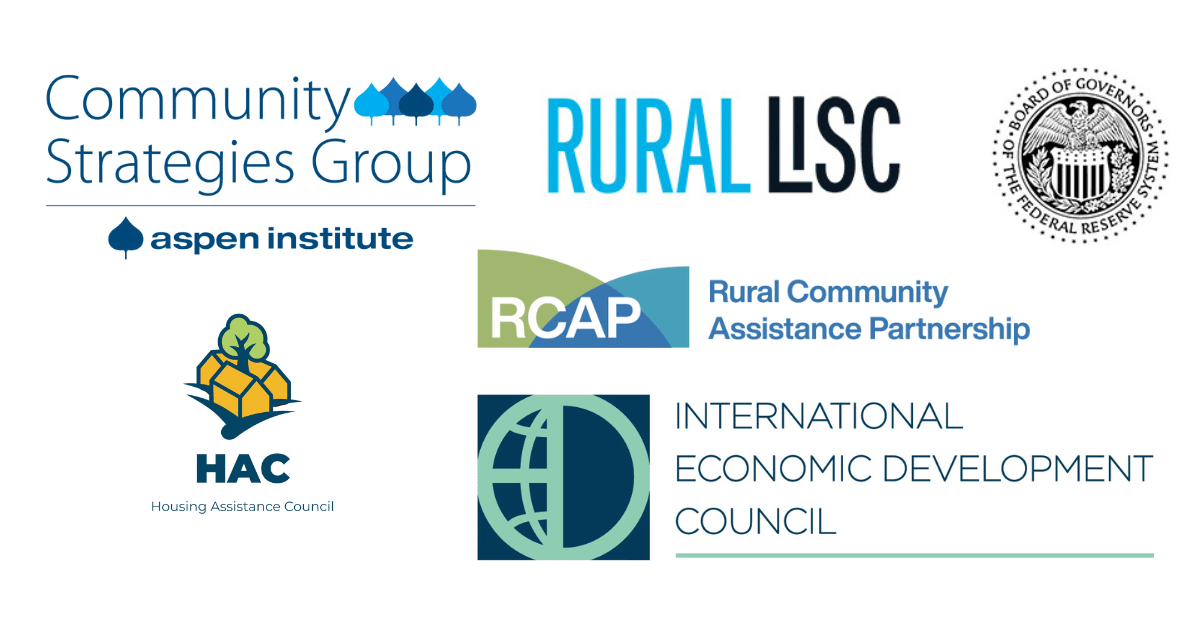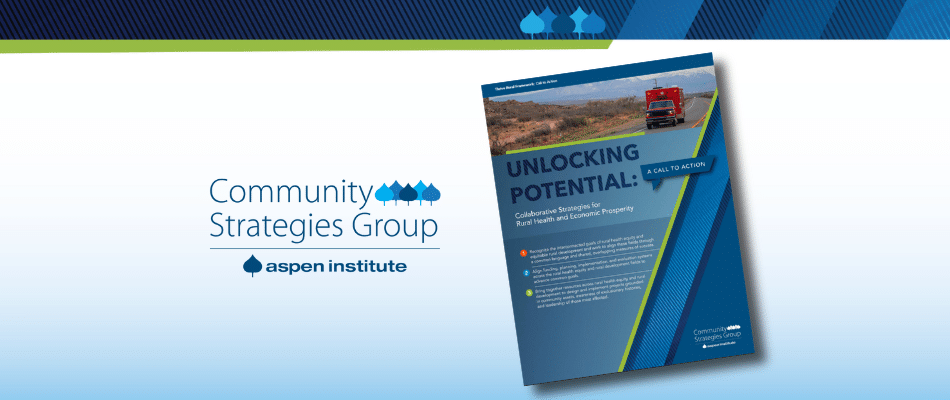The outdoor recreation economy is one of the largest economic sectors in the United States, estimated at $374.3 billion in 2020, and recreation activities have a powerful impact on state and local tax revenue. Unfortunately, this sector has a history of inequitable outcomes, including generating wealth primarily for outside investors, providing mostly low-wage and seasonal employment for local people, and putting unsustainable pressure on local housing and transportation systems.
As new rural outdoor recreation economies are taking root across rural America and in many Native nations, how can we improve the way we do outdoor recreation development to better support families, businesses, and workers? How can we create more sustainable and equitable economic systems that improve local health and wellbeing? How do equity, fairness, local ownership, and better health outcomes shape outdoor recreation efforts?
These questions grew from Aspen CSG’s work on the challenges and opportunities posed by rural outdoor recreation economies. To explore and work to find some answers, Chris Estes, Aspen CSG’s Co-Executive Director, facilitated a virtual discussion of 90 rural leaders with all levels of experience. The ideas and most of the resources shared in this blog arose from this wide-ranging conversation that included a networking bulletin board. Aspen CSG does not necessarily endorse these resources, but we look forward to exploring them with you.
Why is equity important for outdoor recreation economies?
The conversation kicked off with a discussion of Aspen CSG’s Mapping a New Terrain: A Call to Action which explores five principles to improve health and economic outcomes for rural communities and Native nations. Outdoor recreation development done equitably builds a sustainable economic strategy based on local and regional natural assets like forests, riverways, seashores, mountains, and more and connects those assets into value chains that grow local business ownership and high-quality jobs.
As geographic touchstones for outdoor recreation often span across multiple communities, it is essential that those developing outdoor recreation economies take a regional, collaborative approach to ensure equity across communities. Rural Development Hubs are uniquely positioned to coordinate efforts that sustain equitable economic growth that uplifts an entire region.
Equitable outdoor recreation means having beautiful amenities but not being “loved to death.” One participant from Headwaters Economics shared insights from the recent report: The Amenity Trap: How high-amenity communities can avoid being loved to death. As remote work opportunities expand, beautiful vistas and excellent hiking trails have the potential to attract new residents with higher incomes. This can set off a chain reaction where housing and other costs rise to a point where long-time residents are pushed out of the community. The report offers techniques to help rural communities experiencing rapid change due to economic growth from outdoor recreation make long-term, sustainable plans for infrastructure. Headwaters also shared a study on the economic impacts of the proposed Great American Rail Trail, which includes research on revenue and job creation by state.
Getting started developing a stronger, more equitable outdoor recreation economy
- Measure: While discussing how to measure community wealth and development, a participant shared the Appalachian Land Study as a strong example of a community wealth assessment effort used to take stock of community and regional ownership structures. Our recently published Measure Up: Call to Action also explores what it will take to measure success in rural areas and how we can influence government and philanthropy funders to adopt these measures.
- Raise Funds: When asked for good examples of fundraising mechanisms to bridge the gap between towns and nearby national forests with trails and walkways, participants pointed to Quantified Ventures and Transportation Enhancement Activities as innovative thinkers around outdoor recreation infrastructure. There is also an area around Snowshoe, WV working to connect communities via singletrack.
- Convene: Participants discussed the value of outdoor recreation summits as a tool to bring people together from all across a state to talk about the challenges and opportunities of outdoor recreation development. In states with outdoor recreation offices, collaborating with those offices to plan local or regional summits is particularly helpful.
- Plan: Participants also noted that Teton County’s Sustainable Destination Management Plan is an excellent example of how communities can work to balance the sometimes conflicting environmental issues exacerbated in tourism-heavy communities.
Examples of Working Regionally to Improve Equity Outcomes
- Letchworth Gateway Villages is a regional coalition in New York state that came together after a viral video attracted thousands of new visitors to the region. Through their website, visitors can find regional attractions, locally-owned hotels and restaurants, and outdoor recreation activities.
- The Mountain Housing Council of Tahoe Truckee (MHC) is a project of the Tahoe Truckee Community Foundation and brings together 29 diverse partners to accelerate solutions to achievable local housing. The MHC works regionally to tackle the unique and pressing housing challenges in the North Tahoe-Truckee region, including availability, variety, and affordability.
- The PA Wilds Design Guide for Community Character Stewardship, developed by the PA Wilds Paws Planning Team, provides recommendations and guidelines for the most effective ways to build and promote community character and development. PA Wilds also produced a Declaration of Brand Principles, which participants said help guide the work and mission of PA Wilds, as well as attract grants and investments to help continue that essential community work.
- Participants offered the MADE X MTNS Building Outdoor Communities program as a strong example of cohort-based community development. The program is designed to support Western North Carolina’s community leaders to better leverage their natural assets and collaborate to advance their outdoor community and economic development goals, centered around healthy people and places.
National and Federal Opportunities
- Many rural communities have recognized the value and opportunity in outdoor recreation economies but need further technical assistance or catalytic funding to get their plans off the ground. Outdoor Recreation Rountable’s Rural Development Toolkit helps guide rural communities to help them work towards those key economic opportunities.
- Participants shared the upcoming IEDC 2023 conference in Dallas, TX, on September 17-20, 2023. This innovative Annual Conference will explore, modernize, and grow successful industry strategies and practices by focusing on leadership development, workforce and talent development, supporting entrepreneurship, fostering economic opportunity and diversity, and economic transformation.
- One participant also shared a webinar on housing solutions in rural recreation communities that the EPA partnered with USA Rural Development and HUD to host.
- Participants discussed the proven successes of the EPA’s Recreation Economy for Rural Communities Program, which provides ect planning assistance to communities that are trying to leverage the outdoor recreation sector of the economy to revitalize their main streets.
- Applications are now open for the Economic Recovery Corps, a collaborative initiative designed to accelerate recovery from the COVID-19 pandemic in distressed communities throughout the US by connecting organizations with the talent and capacity needed to promote economic resilience and transformative change. Host applications are due June 30.
Devin Deaton, Action Learning Manager with the Aspen Institute Community Strategies Group, curated this learning reflection. Open Field sessions inform and are informed by Aspen CSG’s Thrive Rural Framework, a tool that aims to help communities and Native nations across the rural United States become healthy places where each and every person belongs, lives with dignity, and thrives. To join the next Open Field session, register for our mailing list.






